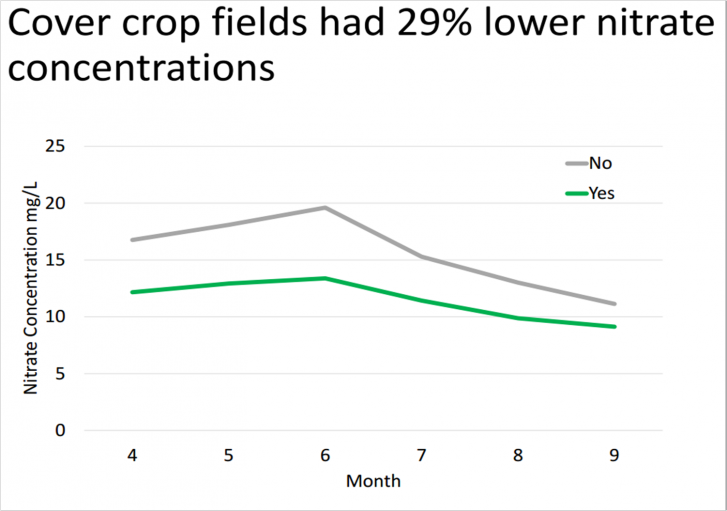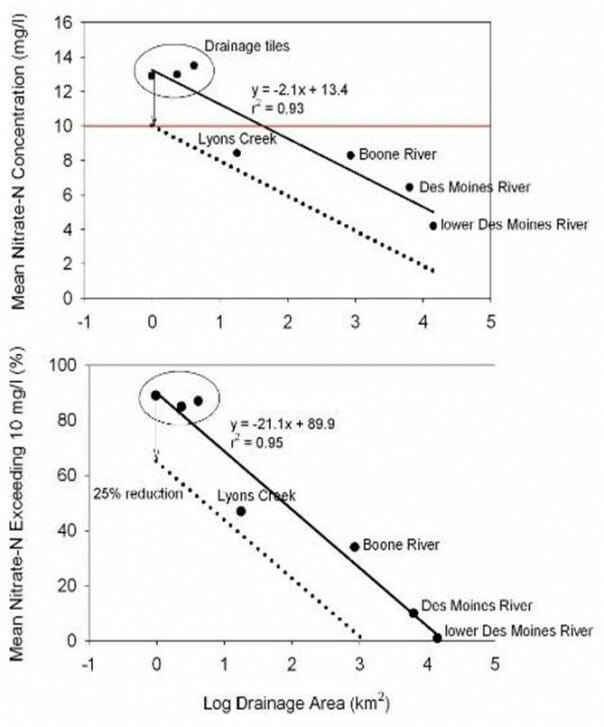Water Quality Monitoring at the 2017 Annual Conference
Improving water quality of the state’s surface waters begins with the source. At our annual conference last month, Adam Kiel, of the Iowa Soybean Association, and Kellie Blair, who farms with her husband A.J. near Dayton, presented about efforts to monitor tile water quality on farms across the state.

Average tile water nitrate-N concentrations from sites with and without cover crops that were monitored in 2016. 2,172 water samples were collected from 272 locations as part of Iowa Soybean Association’s effort in 2016.
Adam provided a rundown of ISA’s monitoring program from 2016. Nitrogen fertilizer rate applied to locations had little to no effect on nitrate-N concentrations observed compared to other in-field practices like cover crops and crop rotation. Kellie shared her farm’s story with water monitoring and expanding some of their conservation practices. Seeing water quality benefits from the use of cover crops influenced the Blairs to more broadly adopt cover crops on their corn and soybean acres. As Kellie mentioned in her presentation, they use actual data to inform their decisions.
It Starts with the Source
At the ISA Research Conference earlier this month, Tony Seeman, of ISA’s Environmental Programs, shared more insight on ISA’s water quality monitoring throughout the state. The team Tony works with hypothesizes that reductions in nitrate-N concentrations near headwater areas can have substantial “downstream” effects. See below the tables referring to the Lyons Creek Watershed through to the lower Des Moines River that connects with the Mississippi River. Their theory states that if nitrate concentrations can be reduced at the source, the proportion of the time stream and river concentrations exceed the EPA drinking standard (10 ppm) could drastically be reduced.

Relation of nitrate concentrations in tile and river water and percent of samples exceeding 10 mg/L (ppm) to log drainage area of watershed area above their collection point in Des Moines River basin. (After Schilling et al., 2012)
*** NOTE: Presentations from other sessions at the 2017 PFI annual conference are now up on our website! Check them out here: https://www.practicalfarmers.org/farmer-knowledge/annual-conference-multimedia/ ***
